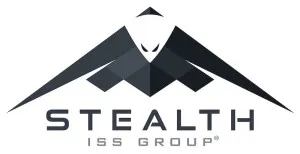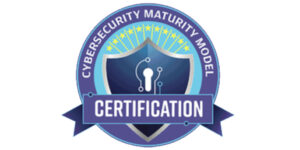Virtual organizations are playing an important part in our society as well as in businesses around the world. With the technology improving and new tools emerging virtual organization are obtaining new means of communication, faster collaboration and access to vast amount of resources and information which they did not have previously, allowing them to achieve their goal in a more efficient and faster way, resulting in more qualitative results. Virtual organizations are organizations existing as a corporate, not-for-profit, educational, or otherwise productive entities that do not have a central geographical location and exists solely through telecommunication tools. They share resources and skills to achieve a common mission or goal by using computer networks as interaction between individual members or group members of the virtual organization.
Taking into consideration the importance of virtual organizations this Case Study paper will analyze the latest and emerging technologies in the field of virtual organizations and will list the technologies that will play a vital role for virtual organizations and their productivity. This analysis will also show these technologies will affect them, what the technologies do, why these technologies will become even more important in the future and what implications they will have for individuals as well as organizations all over the world.
The first technology that was identified as a breakthrough and certainly will improve all interactions for virtual organization is the mobile technology which is currently being researched in the European Union. The project name is WearIT@work and its goal is to replace traditional interfaces, such as screens, keyboards or computer units, by speech control or gesture control, without modifying the applications. This wearable system is currently being tested in four different fields including aircraft maintenance, emergency response, car production and healthcare. The project has already developed cutting-edge technologies for wearable computing to support the communication, collaboration and information processes of emergency response forces. Further the project will develop different technologies suitable for emergency response forces, businesses, the health industry and many other fields (Information Society Technology, 2007).
This technology will be adapted based on the field it will be used and will include lightweight wearable computing and communication units, biosensors to monitor physiological conditions, input and output devices (e.g. speech) that allow for unobtrusive interaction. Also, wearIT@work will address the question of how the actual wearable computing systems can connect to and interact with central information systems for processing, and analysis. In overall this breakthrough technology will be able to provide not only a fast communication between multiple members, but also access to vast resources including location, context-sensitive information services such as location of hazards such as fire, support for automatic or semi-automatic reporting, enhanced communication by providing local ad-hoc networks between multiple parties as well as various information processes such as automated data collection on sites, processing and providing it to others from different organizations or groups (Information Society Technology, 2007).
Another important and emerging technology that will play a major role for the success of virtual organization is Virtual Reality. Virtual technology is a relatively new technology allowing a user to interact with a computer-simulated environment, be it a real or imagined one. Most current virtual reality environments are primarily visual experiences, displayed either on a computer screen or through special or stereoscopic displays, but some simulations include additional sensory information, such as sound through speakers or headphones providing a much more realistic virtual feeling than images alone.
This technology is very useful especially for groups that are not always present in one and the same location and need to have the availability not only to communicate instantaneous but also provide the others with visual information. This could come in very useful for technical presentations allowing users to understand a project much easier than it would be on a piece of paper or for hard to document projects or even design projects where virtual and 3D visualization will allow the project to become more successful. This technology can be then used to allow visual interaction between members of the same group making work processes not only a lot faster, but also more efficient with fewer errors, avoiding miscommunication and providing most likely a lot cheaper solution than not using virtual reality for communication and project realization (Snowdon, 1999).
The next emerging technology that has not really been invented yet but steps in that direction are being taken already is inventing a technology or software that know what the users preferences are, what the user is looking for and what information is needed. Certain software applications have already been developed that monitor the users online behavior and try to identity patters of how users act on certain media, information and data. The software then tries to anticipate what the users next steps will be and provides material and information based on the users interests and past actions. One example is a system that weighs the importance of the relationship among individual shoppers, their behavior on the site, the behavior of similar shoppers, and external factors such as seasons, holidays, and events like the Super Bowl. Using these ever-changing relationships, a system can serve up products that are statistically likely to match what the customer will find interesting.
Although this approach is targeted towards sales a similar approach can be designed for virtual organizations that have to collaborate, share information and be able to communicate fast and provide each pother with useful information when needed. If such technology would be used to access each others data and information or all data located on a common server, the work could be done a lot faster and more efficient. This approach would allow the user to find specific files, work or data based on what they need to get their work done without having to look for information that others are using (Greene, 2007).
With all the latest technology inventions and many communication “gadgets” such as mobile phones, video-game consoles, or televisions people use to connect to the Internet, the problem emerges that a lot of Internet content is not available for all of these devices, and many websites crash when loaded on a mobile device. That is a major problem especially now when many people are responding to their e-mails through Blackberrys and iPhones and using other technology devises to connect to databases, access information, respond to customer requests and working with various internal and external partners on the same projects. In some parts of the world, the mobile phone is the primary way that people access the Internet, and content should be available to those people as much as it is to people using a desktop computer. Having a internet standard that will allows all users to use any device to access data without crashing would certainly enable virtual organization to communicate and collaborate in a much faster way than so far. Everybody would be able to respond to any communication as soon as possible – at least in a technical sense and provide required information to the group without any delays. This would certainly increase efficiency as well as eliminate any compatibility issues technologies have so far.
W3C is currently working on defining a set of standards that developers can use to build websites that work with mobile devices, as well as with desktop computers, so that the mobile Web doesn’t break apart from the World Wide Web. Recently the W3C also launched a new tool that developers can use to test their websites for compatibility with mobile devices. The overarching goal of the initiative is to keep content available regardless of the devices available to a person and that certainly is a major benefit for any virtual organization and their common goals (Naone, 2007).
But no matter what tools virtual organizations use, communication is the major factor to success and everything that will improve communication between group members is something that certainly can be viewed as a very important technology that will enable virtual organizations to increase their work efficiencies and improve communication bottlenecks. There are many technologies such a AIM, chat forums as well as Skype that allow users to take advantage of instantaneous communication with their partners. But most of these tools are available for desktop computers or for the latest mobile technologies such as BlackBerries or iPhones.
Recently iSkoot has introduced software that facilitates mobile access to millions of Skype Internet phone users. It enables complete access to Skype for both making and receiving calls from any mobile phone and this certainly is a breakthrough that many people will use. This technology does not require any special hardware, custom phone, or Wi-Fi hot spot which makes this technology very appealing no matter what country the user is in, who the current phone carrier is and what mobile device is being used. Within minutes of downloading the software, a user can connect his or her regular cell phone to a VoIP Internet phone service such as Skype. The advantage of it is that there is no need for headsets, microphones, PCs, or USB phones. It connects every phone to Skype’s services today while other mobile VoIP services lock users into a specific pocket PC device or require a PC with Wi-Fi or other special hardware (Borland, 2007).
There are many more new technologies that not only facilitate communication between virtual organizations which is the key factor to success and these technologies range from new video conferencing tools, free communication as well as increased internet speed allowing for fast data transfer. All these technologies improve overall work processes, no matter what kind of virtual organization it is, if it is a business partnership or even distance long education projects allowing students to communicate and collaborate on common projects.
![]()
![]()





